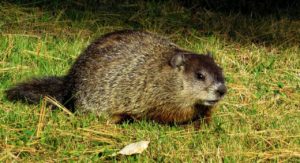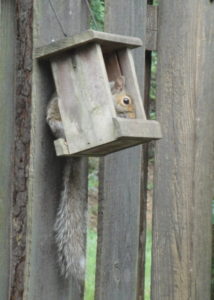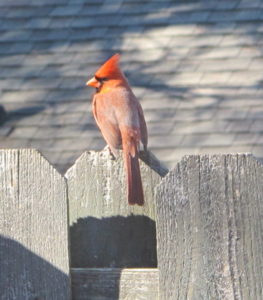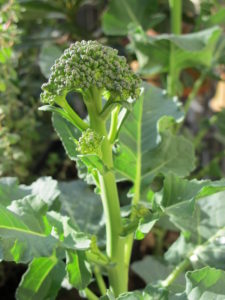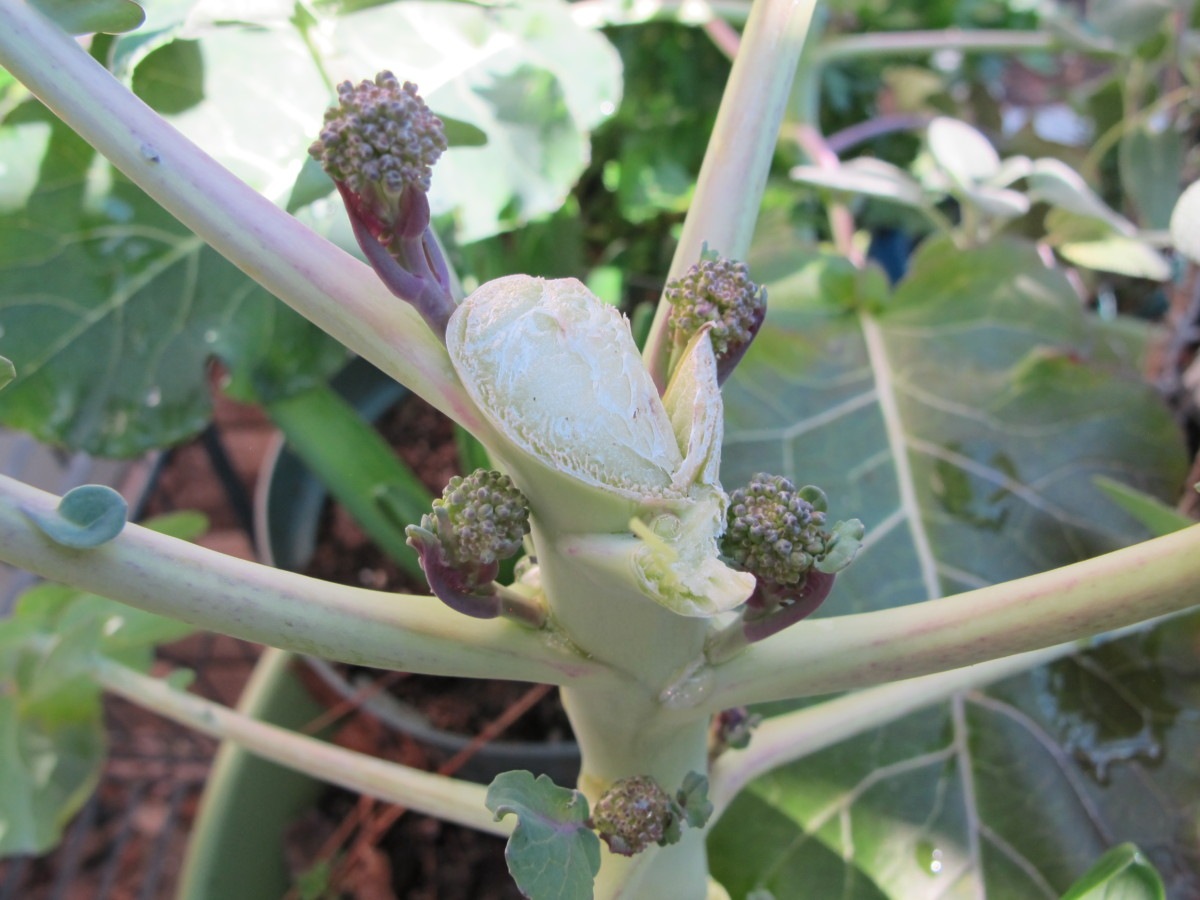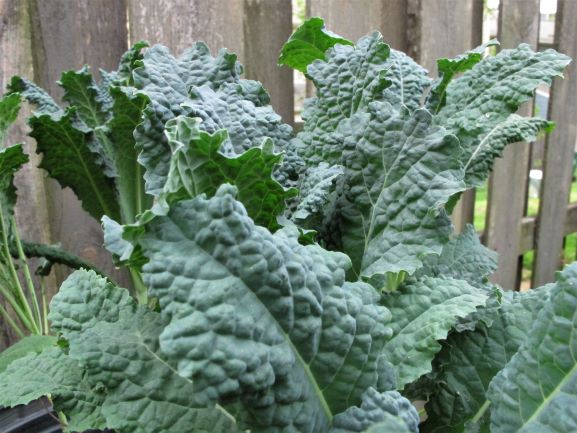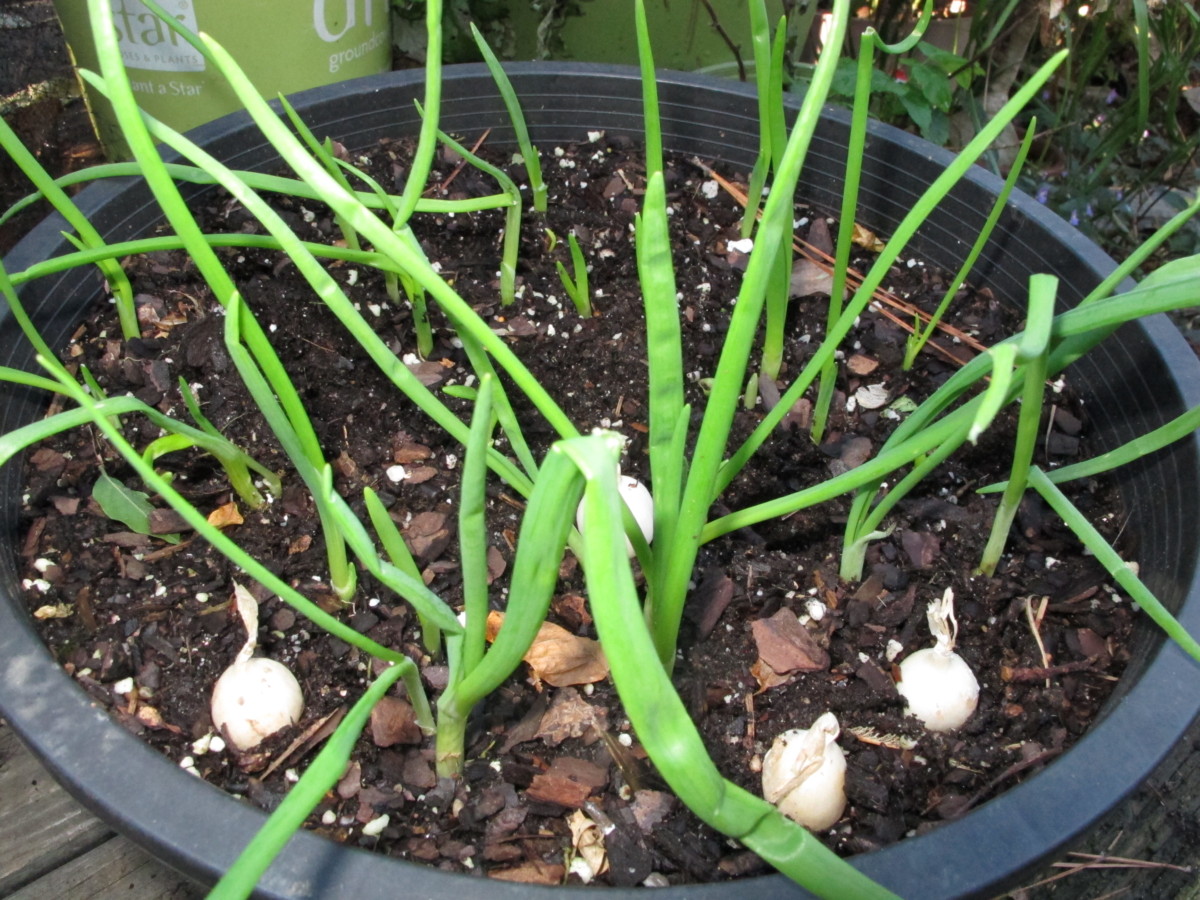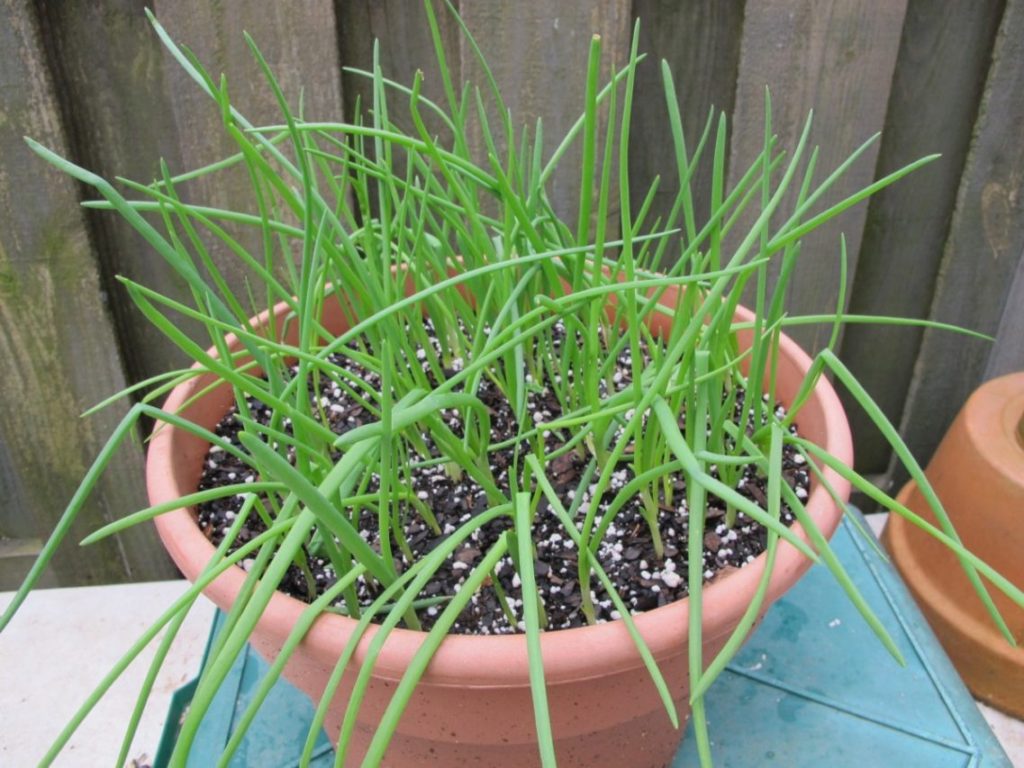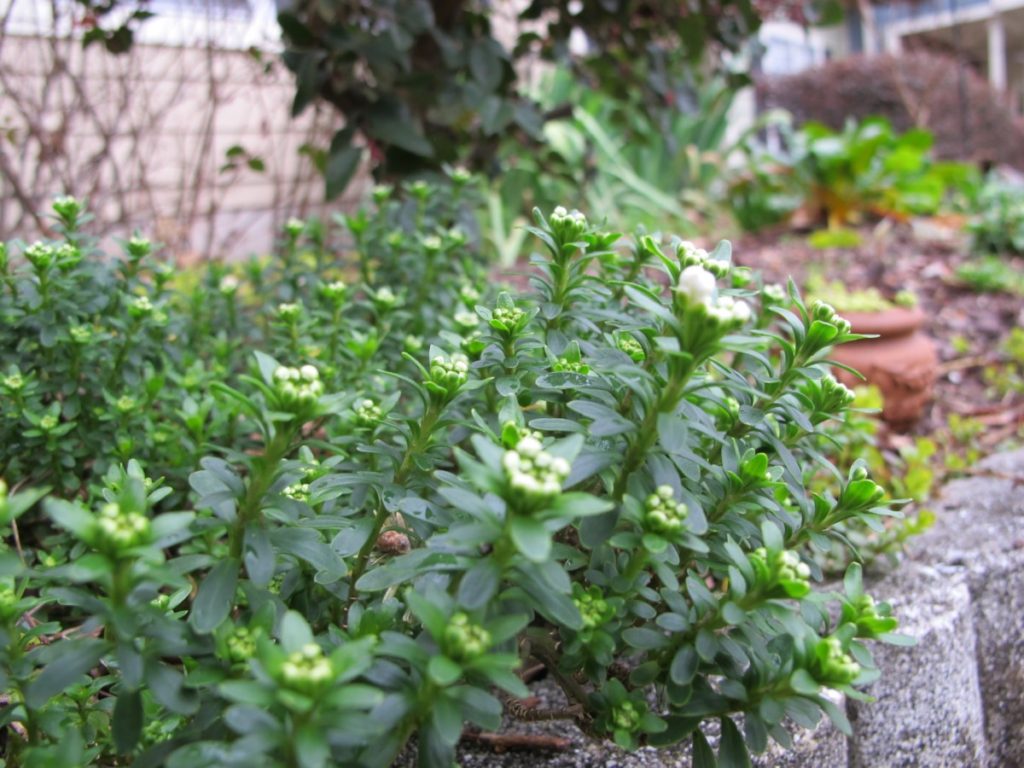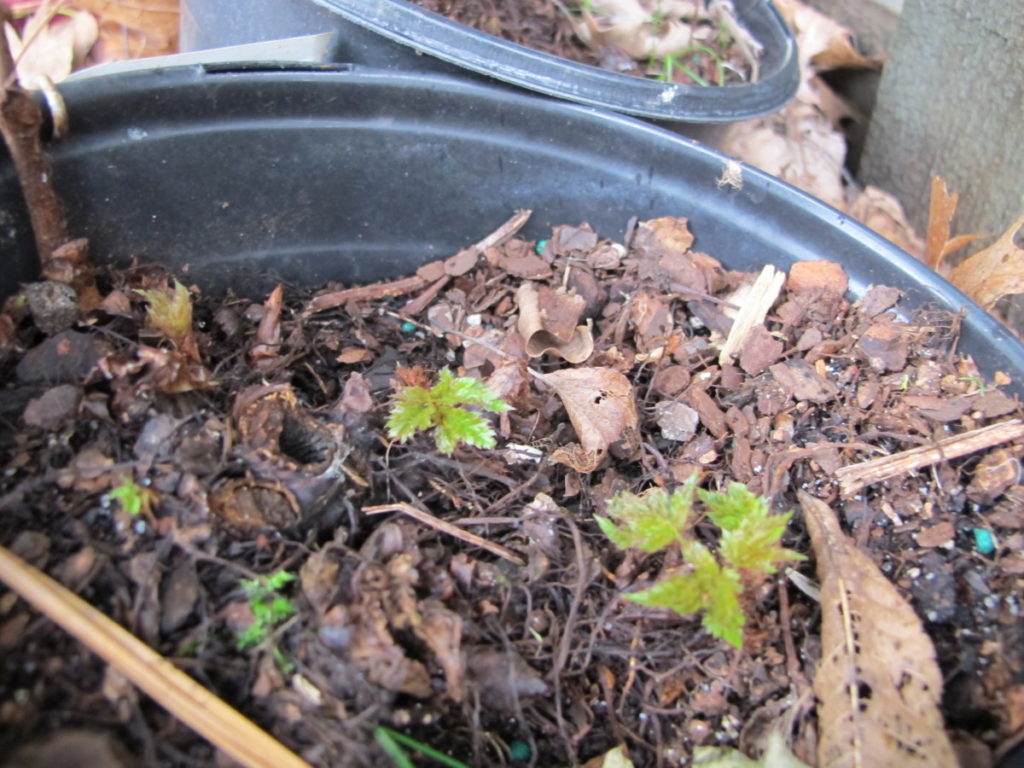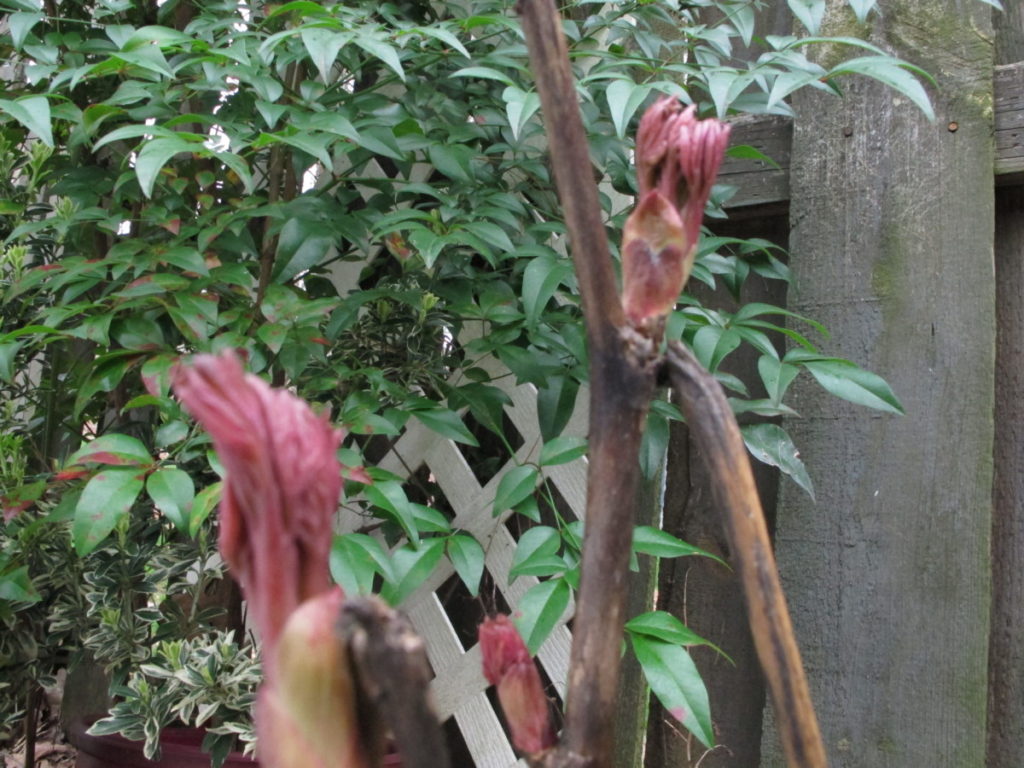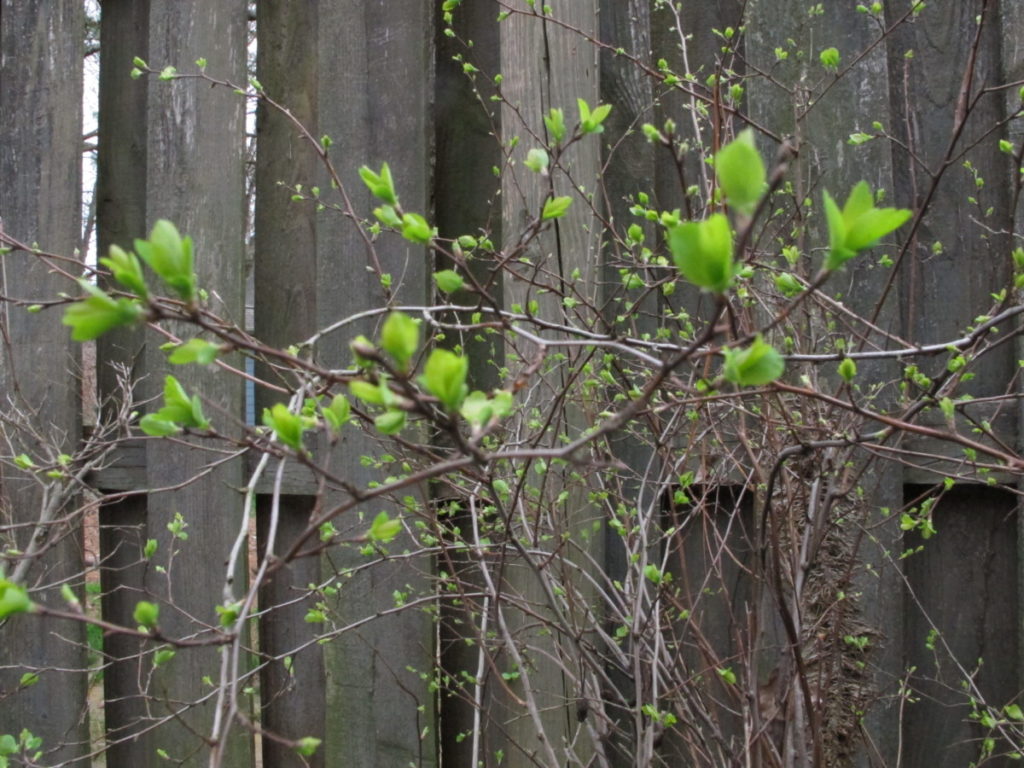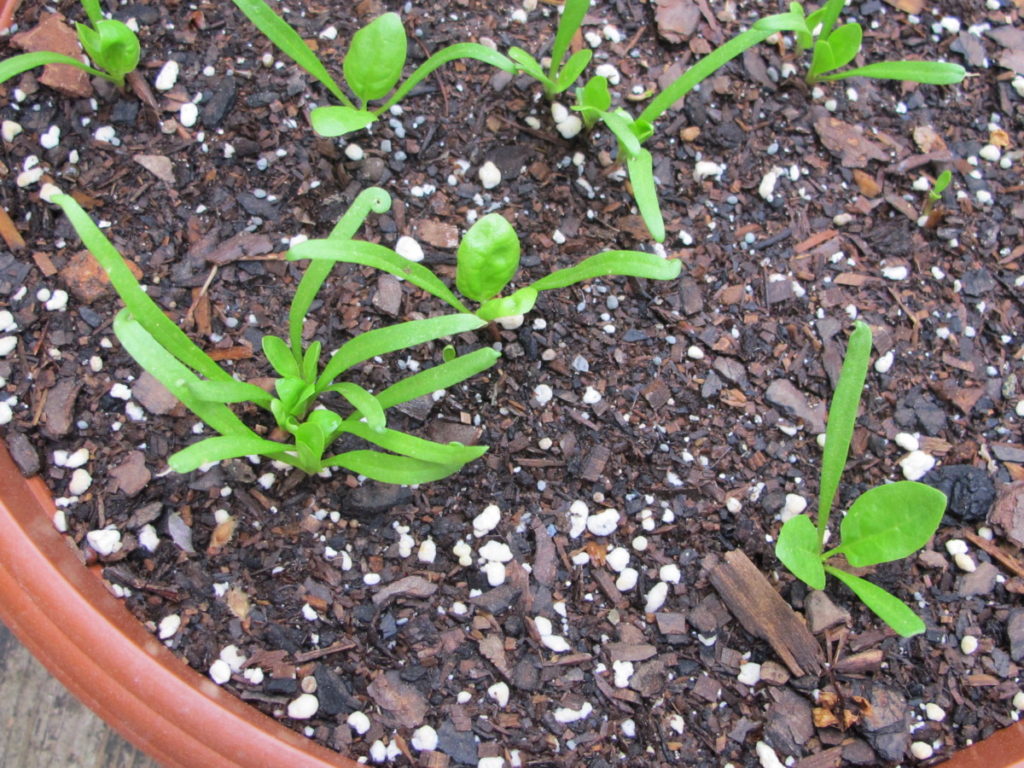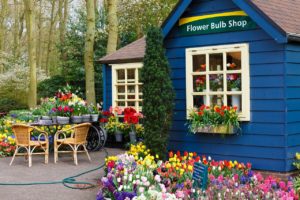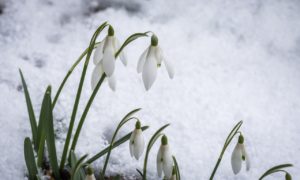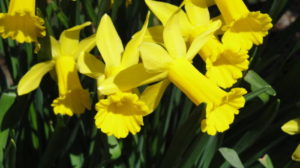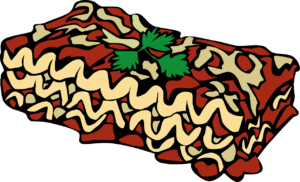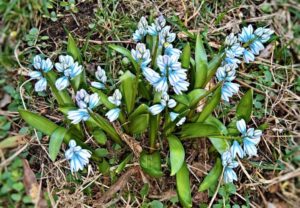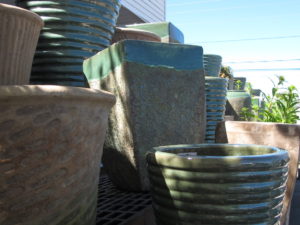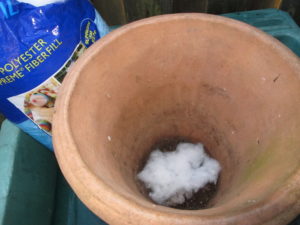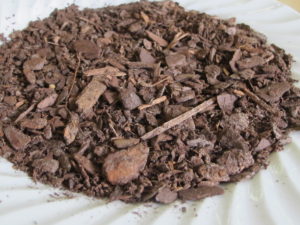2020
Warming Up: The First Daffodils
Early Daffodils
Around the corner, white daffodils bloomed incredibly early—on New Year’s Day! A neighbor’s hellebore, or Lenten rose, was in full flower at the same time, and the local cherry trees (photo, above) have been covered in pink for weeks starting in January. Forsythias are beginning to flower, and the bulbs are coming up thick and healthy after all this rain.
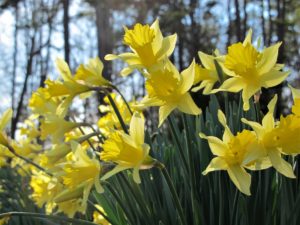
Daffodils in February, Cane Creek Park, Waxhaw NC.
At some point in the early months of the year, seasonal signals indicate the coming of warmer weather to this USDA zone 7b (borderline 8a) area. Flowers popped open this morning that weren’t there yesterday. The grass is greener. Songbirds are more vocal than they were last month. And on blueberries and other shrubs, leaf and flower buds are plumping up, preparing to push those bud scales aside. Mother Nature puts on quite a show in spring, my favorite season.
Maybe there are other indicators that you look for in your landscape. First snake sighting? Migrating birds flying north? Moths flitting around the porch light at night?
The National Oceanic and Atmospheric Administration (the National Weather Service) predicts a greater chance for above normal temperatures over the next 3 months (spring, 2020). This prediction is for the southwest U.S., across the south, and partway up the Atlantic coast. Northern Alaska has a high probability of higher than normal temperatures. Check NOAA’s map for your region’s long-term temperature and precipitation forecasts.
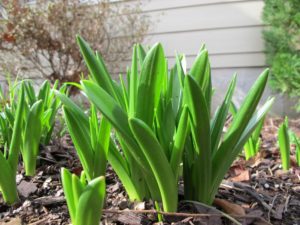
Wood hyacinth, Hyacinthoides hispanica, in January.
Punxsutawney Phil
This year, Punxsutawney Phil, the prognosticating rodent, concurred with NOAA’s forecast, calling for an early spring. Phil would be wise to check with NOAA every year before making his Groundhog Day predictions; his accuracy is below 40%. And there are only 2 possibilities: shadow, no shadow!
This tradition, celebrated in the United States and Canada, dates back to 1887, and is a fun, although not terribly accurate, test that helps build anticipation for spring.
Phil is one of several groundhogs, or woodchucks, around the country called upon to presage the coming weather. After being awakened at dawn on February 2, if he does not cast a shadow, the tradition dictates, spring will come early. The alternative is six more weeks of winter. Well…six weeks from Groundhog Day falls in mid-March. So, mid-March (“six more weeks of winter”) and early spring, as I see it, are the same thing. I guess you’d have to define “early”.
What? Snow?!
For a couple of hours on Saturday, I was mesmerized by a wet snow. We haven’t had any snow here this winter, and I just love to watch it. I also have to go outside and feel it. Then a beautiful Cooper’s hawk came for a visit. The question is…would he swoop down for one of the birds at our back yard bird feeder?
Earlier, I put outside a spoonful of peanut butter, suet, more seed, and whatever we had collected in the “bird cup”. This container sits on the kitchen counter, and is where we put crumbs, withered blueberries, strawberry tops, older peanuts, and anything else that might interest the birds. These morsels go into the box (photo, right) near the bird feeder, and the birds share this bounty with squirrels and various marauders in the night.
I didn’t cover the emerging bulbs to protect them from snow. Daffodils, hyacinths, and wood hyacinths get through this time of the year just fine with no help from me.
The Birds are Changing Their Tune
The local birds recently have been singing in what I call “the key of procreation”. When the birds change their tune, spring isn’t far behind. There’s something almost magical about birdsong at this time of the year. I love to hear it.
Northern cardinals, Carolina wrens, tufted titmice…they all have spring calls that are distinctly different from chirps and melodies sung later. These calls help unite young breeding pairs and reunite mated partners after a separation.
The hawk showed up, though, and everything suddenly went very quiet. He sat in the trees for two hours, his plumage camouflaged by the browns and grays of tree trunks and branches. But he did not make an attempt to catch lunch on the fly.
There are plenty of hiding places for the birds, and they were aware of the hawk’s presence. Birds warn each other of this kind of threat by issuing alarm chirps.
Daffodils and Deer
Some of the yellow daffodils on the berm are beginning to bloom, although recent wind (a tornado, actually) laid them nearly flat to the ground. I planted these bulbs several years ago, and it’s always a pleasure to see their green shoots emerge in January or February. But this winter, they began rising in late December.
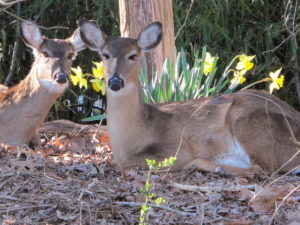
Deer resting among the untouched daffodils.
Deer regularly pass by them as they travel the berm, but they never eat them. All parts of daffodils are poisonous to warm-blooded animals. But bees and other pollinators looking for pollen and nectar when not much is available appreciate the early blooming bulbs, brassicas, and fruit trees.
The bulbs’ foliage is the only ground-level greenery in that area for now. It’s a small thrill to see these bulbs thriving up there, and a bigger one watching the deer walk around them! (***Update***: Several deer rested all morning on the berm, among the blooming daffodils. They sniffed but didn’t eat the flowers. Feb. 14, 2020.)
If deer have eaten every one of your cherished tulips, you’ll have greater success with daffodils.
The Edibles
We had a very mild winter. True—it’s not over. But I covered the broccoli, the kale, and the green onions on only a few nights. Although these plants can tolerate temperatures into the teens, I prefer to protect them below 25°F. This keeps their foliage in great shape. And the green onions would be very difficult to pull from frozen soil!
The microclimate created by the corner between the house and the shed keeps the deck a few degrees warmer than out in the open. Maybe there’s a sunny corner where you can tuck in a few pots of winter greens. Or you might be able to dig a small garden next to a south-facing brick wall.
It won’t be long before you’ll see small pots of hardy cool season greens showing up at the garden center. You can get a head start and plant seeds indoors now for many of these plants.
Mustard greens from last year’s spring garden volunteered in the front garden by mid-summer. The Italian parsley is growing large, and, recently, I picked a few substantial stems of ‘Aspabroc’ miniature broccoli for dinner. The ‘Arcadia’ broccoli heads were harvested in December, but side shoots will provide additional harvests for the next 2 or 3 months. Broccoli leaves are edible, too, and highly nutritious.
Frequent heavy rainstorms washed away much of the soil’s fertility, so I fertilized the pots a few times through the winter. Without it, the broccoli heads would have been much smaller and the greens…well, less green. When the temperatures were more moderate, I used SeaPlus (seaweed and fish emulsion). In cooler soil, though, when microorganisms aren’t active, a soluble synthetic fertilizer works better. Microbes break down the nutrients in organic fertilizers and make them available to plant roots, but they’re dormant in cold soil.
- Side shoots forming on broccoli ‘Arcadia’.
- Mustard greens ‘Florida Broadleaf’.
- Dinosaur (‘Lacinato’ or ‘Toscano’) kale.
- Green onions, with a few more sets to be planted.
A Few Simple Chores In the Garden
As you make your rounds through the garden, note the chores that need to be done. Maybe the mulch needs a refresh by simply turning it over with a garden rake. Are chickweed and other winter-germinating weeds about to go to seed? Don’t let them! Just one seedpod can turn into dozens of weeds next year.
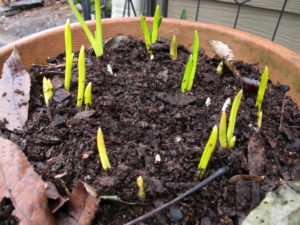
Yellowed leaves caused by shade.
A thick blanket of last year’s fallen leaves will block light from the daffodils and hyacinths emerging from the ground. Although the shaded spears look yellowed now, they’ll quickly green up when exposed to sunlight. Take some of the leaves to the compost pile, or to the brush pile where insects and other animals find refuge in inclement weather.
Have you noticed the first bulbs emerging from your lasagna pot (photo, above)? Be sure to water them if they’ve been under cover, and give them sunlight to green up etiolated foliage. Gardeners in colder climates still need to protect the pots from alternate freezing and thawing, which could kill the bulbs. Their roots don’t have the benefit of insulation provided by the mass of soil around them, as do bulbs planted in the garden.
- Potted green onions.
- Iberis with flower buds.
- Astilbe sprouting in a pot.
- ‘Kopper Kettle’ Itoh peony.
- Bridal Veil spirea.
- ‘Monstrueux de Viroflay’ spinach seedlings.
Even though it’s still chilly, these stirrings in our gardens point to nature’s own impatience to get the show on the road. So, bundle up, and take the kids, the dog, or your thermos to the garden. For me, the thought of going out in the cold is worse than actually being there. Besides, if you stay indoors, you could miss the first act!

